Written collaboratively by Tracey Erickson, former SDSU Extension Dairy Field Specialist, and Heidi Carroll, former SDSU Extension Livestock Stewardship Field Specialist & Beef Quality Assurance Coordinator.
Everyone who works with or owns animals tries their best to keep all animals alive. In turn, they also know there will always be normal mortality. Thus, we need to keep in mind the regulations surrounding disposal. Why? Proper carcass disposal is crucial in preventing the spread of disease and protecting the environment. It is also regulated by South Dakota law with oversight provided by the South Dakota Animal Industry Board.
South Dakota law requires that animals who have died from non-communicable causes shall be properly disposed of within 36 hours by either burning, being buried to a depth of four feet, incorporated into a composting system or disposed of by a licensed rendering plant. Producers should consider location in relation to public view and proximity to roadways when selecting a site.
Considerations During Floods or Natural Disasters
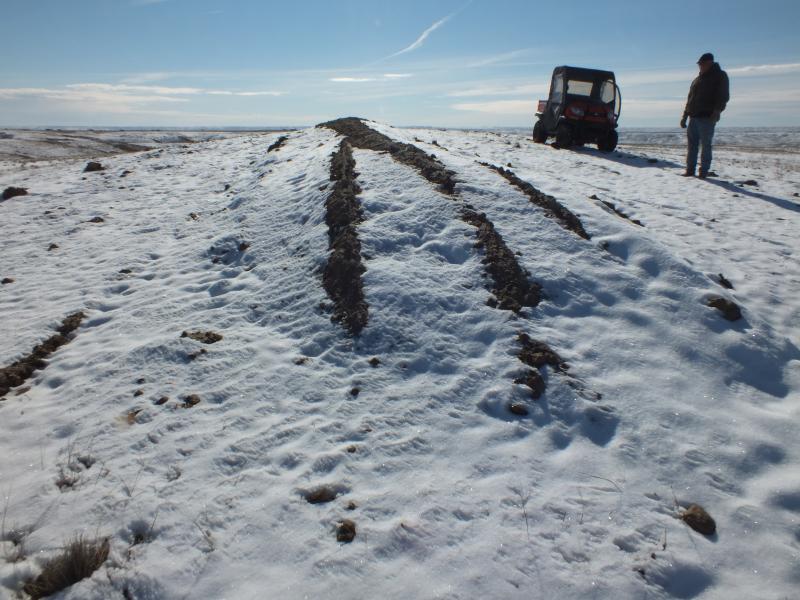
A carcass disposal plan should be a part of every farm’s and ranch’s written emergency action plan. In times of flooding and in areas with sandy soils and/or a highwater table, burial options may be limited. Producers should know their property and identify multiple locations that could be used for proper burial or compost sites or for temporary storage of carcasses awaiting rendering pickup, if available. If natural disasters cause extreme impacts, such as the Blizzard Atlas or floods of 2019, the state may extend the time from death to time of disposal. This will be evaluated on a case by case basis and guidance provided by the South Dakota Animal Industry Board.
Individuals with questions on South Dakota’s carcass disposal laws should reach out to the South Dakota Animal Industry Board by phone (605-773-3321) or email as they develop a written plan for carcass disposal. What follows are basic guidelines for proper livestock burial, composting, burning/incineration or rendering.
Burial
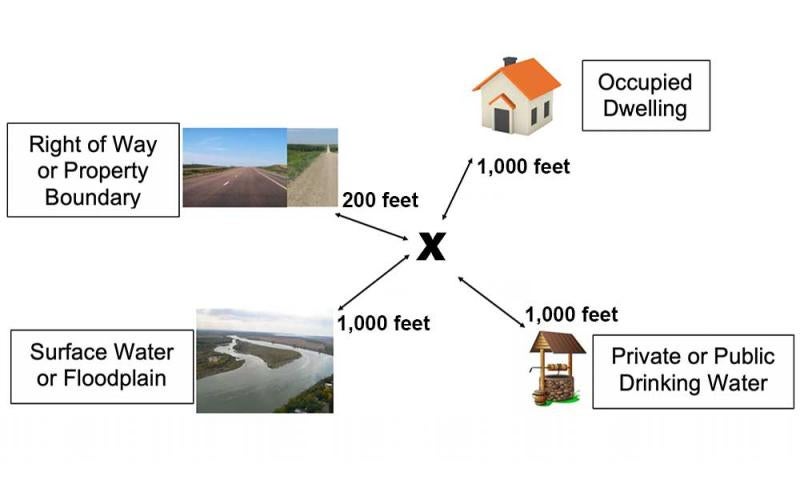
This option is very inexpensive and a secure way to dispose of livestock carcasses. For smaller farms and ranches that may not have large enough equipment to dig large holes, work with neighbors, equipment dealers or equipment rental businesses to secure equipment. Remember the following:
- Call before digging. Use the SD One Call System at 1-800-781-7474 or Dial 811
- Avoid extremely porous soils or areas with high amounts of sand or gravel.
- Minimal setbacks need to be (Figure 1):
- 1,000 feet away from surface water or boundaries of a floodplain or river
- Outside of a wetland
- 1,000 feet from an occupied dwelling
- 1,000 feet from any private or public drinking water well
- 200 feet from a road right-of-way or property boundary (without permission of adjacent property owner)
For more burial resources, view the Center for Food Security & Public Health's Onsite Burial Handout or this USDA NRCS Emergency Animal Mortality Management Guide.
Composting
This option is also inexpensive and environmentally friendly. When done properly it will result in an organic material that can be applied to fields or gardens. Things you will need to consider when designing your compost pile: 1. Compost site and location; 2. Compost materials and ingredients; 3. Compost design; and 4. Equipment requirements.
1. Site Selection & Location
When choosing a site and location you should first consider these items.
- Locate your site away from water sources, such as streams, ponds, sloughs, lakes, and wells.
- The site should be well drained and should not accumulate surface water.
- Location relative to your livestock facilities for access year around.
- It should be aesthetically pleasing.
- Public view and public traffic patterns. You don’t want to be hauling mortalities on a major road to a compost pile or have the pile in full view of major roads with high traffic.
2. Materials & Ingredients
Secondly, what materials or ingredients are needed to start your compost pile?
- A carbon source which could be any of these ingredients: sawdust, crop residues, chopped corn stover or old corn silage, cereal grain straw, cattle manure, turkey litter, and dried grass or yard waste. Ideally, the ingredients should be 50-60% moisture and of proper particle size; however, oxygen will still need to be able to penetrate into the medium.
- A nitrogen source, which is the animal carcasses. In rare instances when starting a fresh pile you may need to add nitrogen, which could also come from manure.
- Water should be available if the carbon medium is too dry and water would need to be added to get it to the ideal 50-60% moisture content. The optimal Carbon:Nitrogen ratio is 25:1.
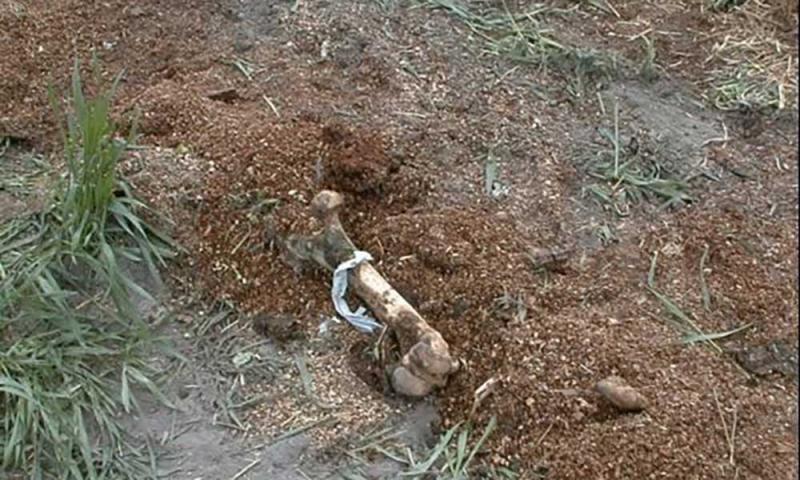
3. Compost Design
Compost design is the third item to consider. Will your compost site be a mound, under a roof or an unroofed composter?
- The advantage of a roofed composter is fewer weather effects, much easier to keep the correct moisture level, worker protection during inclement weather, is more aesthetically pleasing, and rodent control is more easily implemented.
- Unroofed composters have the advantage of being less costly.
- In addition, concrete bases are optional, but they do provide the opportunity to control any runoff if needed, along with making it easier to turn piles in unfavorable soil conditions. On the negative side it does increase the overall cost.
- Strongly consider rodent or pest control as you do not want animal parts being drug out by dogs, vermin, or other animals and left to lie all over the countryside (Figure 2). Fencing the area could help this situation.
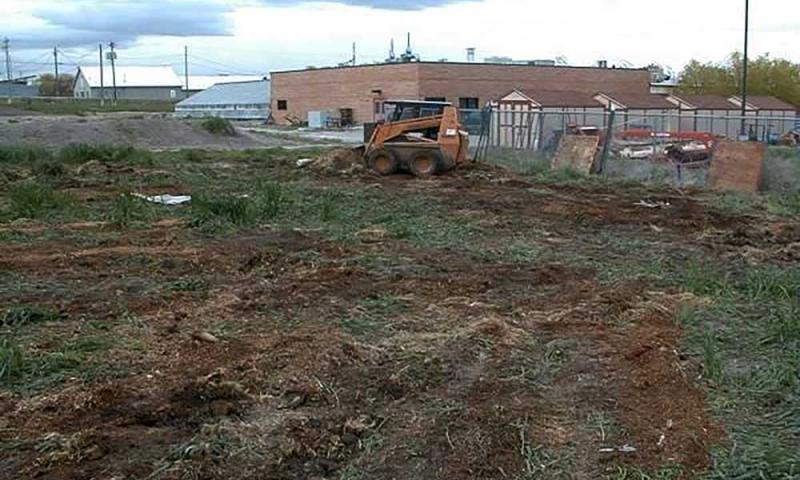
4. Equipment Needed
The last part to consider is the equipment you will need when composting.
- You will want to have either a tractor with a loader or a skid loader (Figure 3). This equipment will help facilitate working with the carbon source and handling the carcasses. Once the temperature starts to drop, the pile should be turned to add oxygen.
- You should also have a probe type thermometer at least 36” long, preferably made out of stainless steel so it will last longer and is easily cleaned (Figure 4). This will help facilitate monitoring of the compost pile temperature.
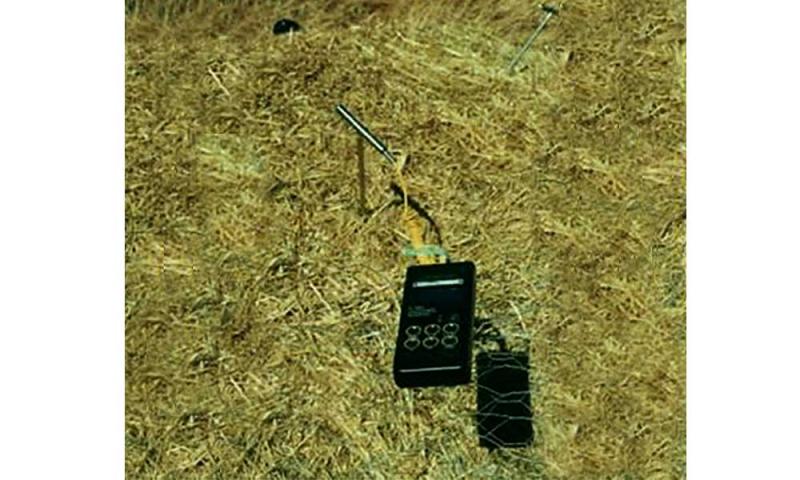
- A manure spreader or contracted waste removal service (aka manure hauler) is needed for the disposal of your compost when the process is complete.
- A logbook is utilized to record the number of animals buried, dates, weights, temperature readings and inventories.
- A moisture tester is useful to monitor the percent moisture in the pile. A moisture test can also be done in an old microwave reserved for this purpose if you have a gram or ounce scale. Detailed steps for moisture testing compost with a microwave are found on eXtension Online Campus’ course, On-Farm Composting.
- A water source should be available.
Compost piles require management. Some basic things to remember are that the ideal moisture should be maintained between 50-60%. If a compost pile is started in the winter, it may not actually start composting until the weather warms. A frozen carcass will not start decomposing until thawed. Thus, carcasses placed in a warm medium such as silage taken from a silage pile, will start degrading faster. In addition, finished compost can be used to help start a new compost pile. This can help with achieving desired temperatures sooner along with establishing desired bacteria. Compost should have an internal temperature of 130-140 degrees Fahrenheit for at least 2-3 days. Mortalities should be added in layers and surrounded completely on all sides by at least one foot of carbon medium. Rodent control may need to be addressed from the start of creating a compost pile. Continued monitoring of the pile is necessary to achieve adequate results. And lastly, if there is a putrid odor coming from the compost pile, something is wrong and corrections need to be made.
Additional composting resources can be found in the Center for Food Security & Public Health's Carcass Disposal/Composting Handout.
Burning & Incineration
It can be difficult to either bury or compost dead animals in cold weather, thus an alternative option is incineration. The South Dakota Animal Industry Board recommends the following guidelines if utilizing this option:
- Notify the local fire departments prior to initiating.
- The site should be a minimum of 1,000 feet from an occupied dwelling, propane tank, fuel tank or other containers storing flammable substances.
- It should take place only during favorable weather conditions.
- The smoke plume should be monitored not to impact neighbors, highway or airport traffic.
- DO NOT USE fuels such as tires, railroad ties or treated wood to help fuel the fire.
Rendering
This option provides an excellent opportunity to utilize animal protein from carcasses that cannot enter the human food chain. However, the availability of rendering services may be limited in areas of South Dakota, especially western counties.
Keep in mind that vehicles hauling dead animal carcasses for rendering need to be inspected and permitted by the South Dakota Animal Industry Board. This helps ensure that transport vehicles prevent the spread of disease, utilize appropriate sanitation practices and that carcasses are transported in leak-proof, covered containers.
The South Dakota Animal Industry Board provides a list of rendering hauler services on its website.
Reference:
Carcass Disposal, South Dakota Animal Industry Board.


